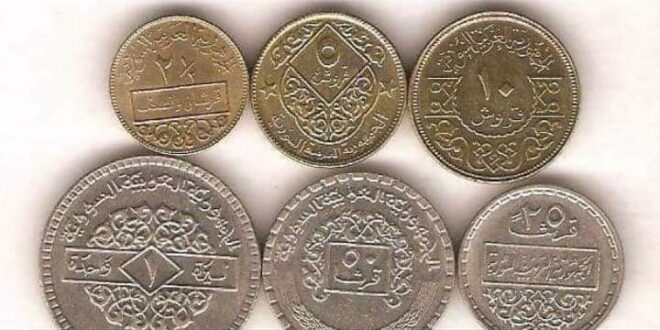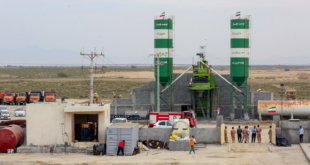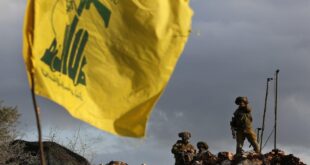The collapse of the Assad regime on 8 December 2024 unleashed one of Syria’s most complex economic challenges in decades. Soaring inflation, eroded confidence in the Syrian pound, and the dominance of black-market speculators have turned the national currency from a medium of exchange into a symbol of financial collapse. In response, the Central Bank of Syria has embarked on an ambitious initiative to introduce a new Syrian pound—a pivotal step aimed at restoring monetary sovereignty, curbing illicit currency markets, and rebalancing the country’s economic power structure.
Drivers Behind the Currency Overhaul
The decision to replace the Syrian pound is far from symbolic; it is a critical measure to stabilise an economy long undermined by war and mismanagement. Decades of hyperinflation and steep devaluation have stripped the currency of its purchasing power, leaving both citizens and international markets doubtful of its future. The new currency seeks to correct these structural flaws while also confronting a more immediate issue: the vast sums of old pounds smuggled abroad by loyalists of the former regime.
Following the regime’s collapse, insiders reportedly transferred trillions of pounds to Iraq, Lebanon, and other neighbouring countries, enabling them to manipulate exchange rates beyond the Central Bank’s reach. The result is a paradox in which Syrian banks suffer severe liquidity shortages while the black market is awash with cash, further weakening state control. The revamped currency seeks to neutralise this threat by rendering smuggled cash obsolete—unless it is reintroduced through regulated banking channels, subject to strict oversight and anti-money laundering measures.
Dr Khaled Turkawi, an economic researcher, underlined the urgency of the reform in an interview with Syria TV: “Huge amounts of smuggled or untracked cash, both within and outside Syria, are beyond the Central Bank’s control. Regulating the money supply is essential to prevent tax evasion, human trafficking and smuggling.” By enforcing caps on exchanges and requiring proof of origin for large sums, the government hopes to seize or deactivate illicit wealth, thereby weakening the financial strongholds of regime loyalists and speculators.
The new pound also carries potent symbolic weight. The outgoing currency, bearing the images of the Assad family, is for many a stark reminder of decades of repression. “The current currency bears the faces of a family that killed Syrians,” Turkawi stated. “Replacing it is not just economic—it’s a step towards erasing the legacy of a despised regime.” The new pound is intended to mark a fresh beginning, signifying national renewal and economic independence.
Economic Foundations for a Successful Launch
Introducing a new currency involves more than redesigning banknotes or cutting zeros. Its success depends on a stable economic foundation. Syria’s transitional government has outlined five key pillars underpinning the effort:
Establishing a stable exchange rate is a prerequisite. Government data suggests the Syrian pound has appreciated by roughly 35% since the introduction of liquidity controls and anti-speculation policies. These gains reflect market receptiveness and serve as a foundation for launching the new currency as the culmination of a broader reform agenda.
A functional, trusted banking system is essential. Syria’s banks—crippled by years of forced withdrawals and public scepticism—must be restructured to manage transactions reliably and safeguard savings. Restoring confidence in the formal financial sector will help divert funds away from black-market dealings.
Syria has opened its doors to Arab and international financial institutions, bringing in expertise, technology, and credibility. These entities can modernise the banking infrastructure and lend regional and global legitimacy to the new currency—facilitating investment and mitigating the effects of longstanding sanctions.
Historically, the Central Bank acted as a political tool of the Assad regime, printing money to finance deficits and driving inflation. The new framework calls for an autonomous Central Bank aligned with international financial norms to maintain the new pound’s purchasing power and prevent political interference.
A currency’s value is intrinsically linked to the availability of goods and services. For the new pound to maintain its worth, Syria must enhance domestic production—particularly in agriculture and industry—while managing its reserves of gold and foreign currency with care. Without real economic output, the currency risks becoming as devalued as its predecessor.
Rolling out a new currency is a logistical feat requiring detailed planning, secure infrastructure and substantial funding. The process begins with designing banknotes that reflect Syria’s cultural identity while incorporating advanced anti-counterfeiting technologies—watermarks, embedded threads, specialised inks and serialised codes. The paper itself must meet international standards, making counterfeiting virtually impossible.
To safeguard the operation, the Central Bank plans to employ multiple international printers, ensuring redundancy and operational security. Transporting the printed currency into Syria will involve rigorous security protocols to prevent theft or leaks. Meanwhile, a national public awareness campaign will educate citizens on recognising the new banknotes, the rationale behind removing zeros, and the exchange procedure. Distribution will be handled through Central Bank branches, commercial banks and certified money changers.
The transitional period will be decisive. To protect the economy and neutralise regime remnants, strict exchange limits will be imposed. Large transactions will require full documentation to verify the source of funds, ensuring that illicit cash stockpiles cannot be laundered or reintroduced into circulation.
Dr Turkawi emphasised: “A secure protocol for printing and transporting the currency is vital, as is expanding banking infrastructure and streamlining procedures to expedite the exchange process.”
Strategic and Political Dimensions
The new Syrian pound is more than a financial instrument—it is a political statement. By reclaiming control over the money supply from black-market operatives and loyalists of the old regime, the state aims to stabilise the exchange rate and reduce price volatility. This would offer much-needed relief to ordinary Syrians, many of whom have endured years of fluctuating prices for essentials such as food, medicine and fuel.
Politically, the currency reform is a clear signal of the regime’s demise. Depriving former insiders of their financial leverage strengthens the position of Syria’s transitional authorities, while the strict oversight of the exchange process enables the government to track, tax or seize hidden assets—dealing a blow to entrenched corruption and smuggling networks.
Internationally, the new pound represents Syria’s intention to rejoin the global economy on transparent terms. By aligning itself with international financial protocols, the country hopes to attract investment, rebuild diplomatic ties and gradually lift the economic isolation that has defined recent decades.
A High-Stakes Gamble
The launch of the new Syrian pound is a bold attempt to reclaim economic sovereignty and chart a course towards stability. Yet its success depends on continued reform, public trust, and international engagement. Without these, the new currency risks becoming yet another casualty in Syria’s long-running financial crisis.
For now, it stands as a symbol of hope—a chance to redefine Syria’s economic future and lay the groundwork for a more resilient, accountable and sovereign state.
 Eurasia Press & News
Eurasia Press & News




